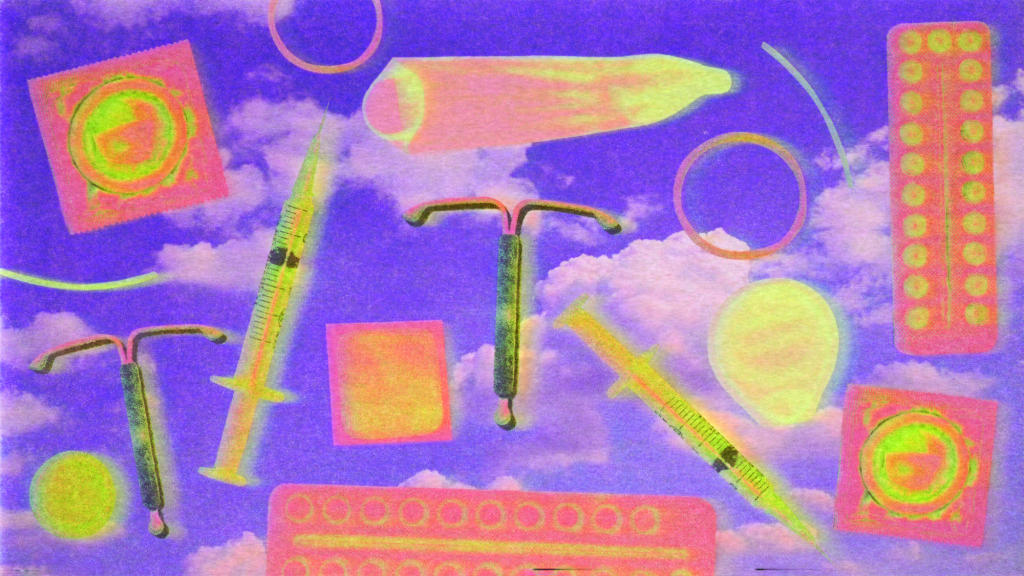Ask most women about their birthing stories, and sexual pleasure doesn’t come into play. Childbirth is messy, painful, and decidedly unsexy. So when Angela Gallo, a Melbourne-based doula and birth photographer, wrote a blog post extolling the benefits of touching herself during labor, the reactions were pretty predictable: Tabloid articles soon proliferated, followed by shocked and appalled commenters.
Gallo, for her part, said she’s just grateful to have delivered her second child on her own terms—and touching herself was just one piece of the puzzle.
Videos by VICE
“In my first birth, I didn’t understand my body on a physiological level, and that’s where I really sabotaged myself,” she told me. She described her first hospital birth as a “cascade of interventions,” beginning with 20 hours of labor, followed by contraction-inducing Pitocin and an epidural, then three hours of fruitless pushing that culminated in a vacuum-assisted delivery of a healthy baby girl.
For her second birth, she opted to do the bulk of laboring at home, assisted by her husband and a doula.
“As I neared transition, near the end of labor, I was feeling very vulnerable and stressed-out; I went into the shower to find some relief, and my husband asked if I would like to have sex. I said no, but it reminded me I could self-stimulate,” she told me. “The second I started using clitoral stimulation, the resting period between contractions was more pleasurable and I could use more force to meet the climax of the contractions.” Gallo described the sensation as “taking the edge off” the pain more than sexual gratification.
“The hormones in birth and sex are identical.” —Kate Dimpfl
Beyond conception, the connection between sex and birth is rarely discussed or even validated. What most of us know about giving birth is that it’s usually a) painful and b) humiliating (see: spontaneous bowel evacuation). Simply put, in the United States, where nearly 99 percent of births take place in a hospital or clinical setting, there’s no space for sexuality in the delivery room.
And yet, “what gets the baby in gets the baby out” has become a growing refrain espoused by people like Kate Dimpfl, founder of Holistic Childbirth.
“The hormones in birth and sex are identical,” explained Dimpfl in her TEDx talk, “We Must Put the Sex Back into Birth,” pointing to the hormone oxytocin, which was literally named after the Greek term for “swift birth.” Oxytocin is released during sexual arousal and orgasm, but also during childbirth, skin-to-skin contact with a newborn, and breast-feeding. With oxytocin comes a rise of endorphins, which can naturally reduce pain.
Synthetic drugs—like pitocin, the drug most commonly administered in hospitals to speed up labor—mimic oxytocin, creating stronger, more frequent contractions than the natural hormone, often leading to a numbing epidural. As adrenaline increases during labor, it can inhibit oxytocin production and redirect blood flow away from the uterus—essentially preparing your body for “fight or flight” and ultimately stalling labor. This may lead to assisted delivery using tools like a vacuum or forceps, or an emergency Cesarean section.
“Almost all women are underserved when it comes to birth because we’re pretty ignorant about our own bodies,” Dimpfl told me. “Birth is simply your body recycling systems and putting them in place to push out a baby.”
So can bringing sexuality into the process make childbirth pleasurable instead of painful? Maybe not, but there’s plenty of anecdotal evidence to suggest it’s possible.
“I had sex and self-stimulated in labor, and I orgasmed,” said Laura Kaplan Shanley, author of Unassisted Childbirth. “As we free ourselves from the shame surrounding birth and embrace our sexuality, our births go better and are safer.”
Shanley’s website is full of stories like this—women kissing their partners by candlelight, having leisurely sexual encounters, and orgasming in the birthing tub at home. And while you’ll be hard-pressed to find many experts who support unassisted births—as in, at home, without the presence of a physician or midwife—the core of Shanley’s philosophy stems from a concept that has existed for millennia but has been diminished in the past century: The majority of births are “normal” and don’t require medical intervention.
Proponents of natural birth like Ina May Gaskin, often called “the mother of modern midwifery,” aim to take the fear out of childbirth, promote low-intervention births, and address the pain of labor through techniques like breath, kissing, massage, nipple stimulation, and other types of touch.
Dimpfl acknowledged long-accepted facts about using sexuality as a childbirth tool—for example, sex itself can produce a surge of oxytocin and semen can actually soften the cervix. But she also stressed the importance of bringing sexuality into the birthing process for more pervasive reasons: “If we look at birth as a sexual act, a care provider who is invited into that space is going to behave differently, such as asking permission to touch.”
For more women in a hospital childbirth setting, things like privacy and consent are no longer a factor after your obstetrician checks your cervix the millionth time or decides it’s time to “sweep” the membrane of your amniotic sac to jumpstart labor.
Gallo added that it’s “very easy to fall into a system,” comparing her first “highly medicalized” birth to her second. “I feel if you understand where your body is coming from, you’re much more likely to have a great experience and outcome.”
By not viewing childbirth as a part of the sexual spectrum in which women have agency over their own bodies, Dimpfl argued, the entire process is being taken out of their hands. “A third of the nation reports having had a traumatic birth experience,” she said. “To ignore the sexuality creates a tremendous amount of harm for women.”
Follow Sarika Chawla on Twitter.



